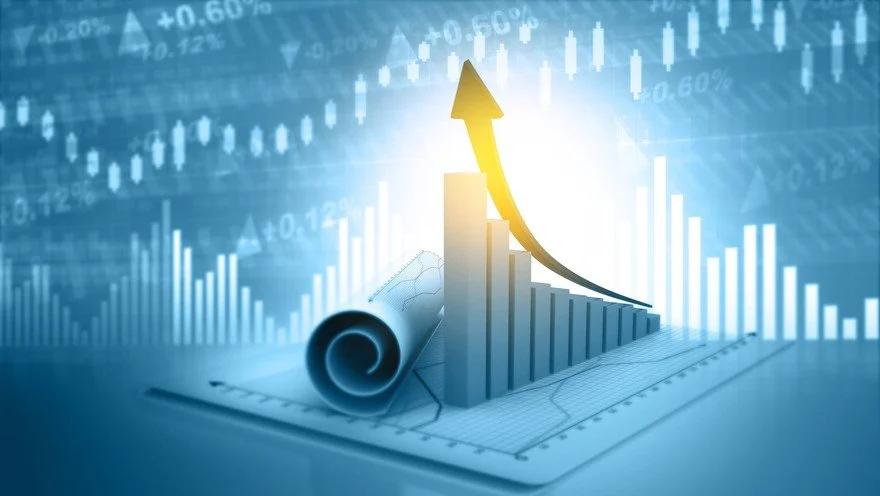Navigating the Shifting Sands: ECB's Rate Hike Trajectory and its Impact on the Eurozone
Meta Description: ECB interest rate hikes, policy normalization, Eurozone economy, inflation, monetary policy, economic outlook, Senentner's comments, financial markets, interest rate forecasting, economic recovery.
Forget the jargon-filled press releases and the cryptic analyst reports. Let's talk frankly about the European Central Bank (ECB) and its recent interest rate maneuvers. ECB Governing Council member, Gabriel Makhlouf’s recent statements hinting at a nearing end to aggressive rate hikes, sent ripples through the financial world. But what does this really mean for you, the everyday citizen, the small business owner, the investor nervously eyeing their portfolio? This isn't just another dry economic forecast; it's a deep dive into the human story behind the numbers, a look at how the ECB’s decisions directly affect your life, your savings, and the future of the Eurozone. We'll unpack the complexities of monetary policy, exploring the potential pitfalls and triumphs, using clear, concise language and real-world examples to paint a vivid picture of the current economic landscape. We won't shy away from the uncertainties, but we will equip you with the knowledge to navigate this period of change with greater confidence. Prepare to go beyond the headlines and understand the intricate dance between inflation, interest rates, and the everyday realities of living in the Eurozone. This isn't just about numbers; it's about your future. Buckle up, because we're about to embark on a journey through the heart of European economics!
ECB Interest Rate Hikes: A Closer Look
The ECB's recent moves to combat inflation have been nothing short of dramatic. For months, we've witnessed a relentless upward march in interest rates, a clear signal that the central bank is determined to tame runaway prices. But this aggressive approach isn't without its risks. While higher rates help curb inflation by making borrowing more expensive, they can also stifle economic growth – a bit of a tightrope walk, wouldn't you say? Makhlouf’s comments suggest that they may be nearing the peak of this cycle, suggesting a potential slowing of these increases. However, the path ahead remains uncertain. Geopolitical instability, energy price volatility, and lingering supply chain issues continue to complicate the picture.
The ECB’s actions aren't made in a vacuum; they’re a response to a complex interplay of factors. Inflation, that relentless erosion of purchasing power, is the primary culprit. Rising energy prices, supply chain disruptions brought on by the pandemic and the war in Ukraine, and robust consumer demand have all contributed to this inflationary surge. The ECB's goal is to bring inflation back to its target of 2% – a seemingly simple goal, but one that requires navigating a treacherous path.
Understanding the Impact on Different Sectors
The effects of these rate hikes are far-reaching and vary significantly across different sectors.
-
Housing Market: Higher mortgage rates are already cooling down the once-hot housing markets across many Eurozone countries. This can be both good and bad: good for those hoping for more affordable homes, but bad for those relying on property values to increase.
-
Businesses: Increased borrowing costs make it more expensive for businesses to invest and expand, potentially slowing down job creation and economic growth. Smaller businesses often feel this squeeze the most.
-
Consumers: Higher interest rates affect everyone, from those with mortgages to those using credit cards. Saving becomes more attractive, but spending less can also lead to slower economic activity.
| Sector | Impact of Rate Hikes | Potential Positive Outcomes | Potential Negative Outcomes |
|--------------------|----------------------------------------------------|-----------------------------------------------------------------|-------------------------------------------------------------|
| Housing Market | Cooling down of prices, reduced demand | Increased affordability for some, market stabilization | Reduced investment in new homes, potential market downturn |
| Businesses | Increased borrowing costs, reduced investment | Greater financial discipline, increased profitability (eventually)| Slowed growth, job losses, reduced innovation |
| Consumers | Higher loan interest, reduced disposable income | Increased savings, reduced debt levels | Decreased consumer spending, economic slowdown |
The Role of Inflation in ECB Decisions
Inflation remains the pivotal factor influencing the ECB’s decisions. The central bank closely monitors various inflation indicators, including the Harmonized Index of Consumer Prices (HICP), to gauge the effectiveness of its policies. But measuring inflation is tricky; different measures tell different stories, and forecasting future inflation remains a complex and imprecise science. Unexpected shocks, like a sudden spike in energy prices, can throw even the most sophisticated models off course. This highlights the challenge the ECB faces in striking the right balance between controlling inflation and supporting economic growth.
Navigating Uncertainty: The Road Ahead
The coming months will be crucial in determining the long-term impact of the ECB’s monetary policy. While Makhlouf’s comments suggest a potential slowing of rate hikes, we're not out of the woods yet. The persistence of inflation, the evolving geopolitical landscape, and the potential for unforeseen economic shocks all contribute to a considerable degree of uncertainty. The ECB will need to carefully navigate these challenges, constantly adjusting its course based on incoming data and emerging risks. The success of its strategy will ultimately depend on its ability to achieve a "soft landing" — a scenario in which inflation is brought under control without triggering a significant economic recession. It's a delicate balancing act, to say the least!
Frequently Asked Questions (FAQs)
Q1: What are the potential downsides of raising interest rates?
A1: Raising interest rates can slow economic growth, potentially leading to job losses and reduced investment. It can also increase the cost of borrowing for businesses and consumers, impacting spending and overall economic activity.
Q2: How does the ECB's policy affect my savings?
A2: Higher interest rates generally mean better returns on savings accounts and other fixed-income investments. However, the impact depends on the specific type of savings account and the overall economic environment.
Q3: What is the ECB's inflation target?
A3: The ECB aims for inflation of 2% over the medium term, as measured by the Harmonized Index of Consumer Prices (HICP).
Q4: How does the war in Ukraine affect the ECB's decisions?
A4: The war has significantly contributed to inflation through energy price shocks and supply chain disruptions. The ECB must carefully consider these geopolitical factors when setting its monetary policy.
Q5: Will interest rates continue to rise indefinitely?
A5: It’s unlikely. The ECB’s goal isn't to keep raising rates forever, but to bring inflation down to its target level. The pace and extent of future rate hikes will depend on the evolving economic situation.
Q6: What should I do to prepare for potential economic shifts?
A6: It's wise to diversify your investments, manage your debt effectively, and stay informed about economic developments. Speaking to a financial advisor can also provide personalized guidance.
Conclusion: A Balancing Act
The ECB's journey towards policy normalization is a complex and challenging undertaking. The path ahead remains uncertain, with numerous factors influencing the economic outlook. While recent statements suggest a potential slowing of rate hikes, vigilance remains paramount. The success of the ECB's strategy hinges on its ability to finely balance the need to control inflation with the imperative to support economic growth. Staying informed and understanding the implications of ECB policies is crucial for navigating these turbulent times. The future of the Eurozone economy hangs in the balance, and understanding the dynamics at play is more important than ever before.



